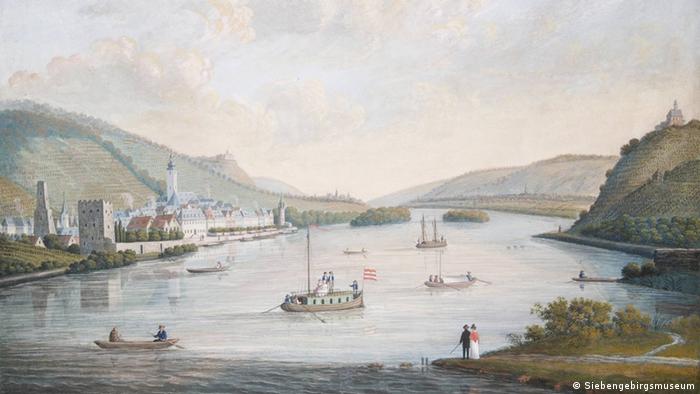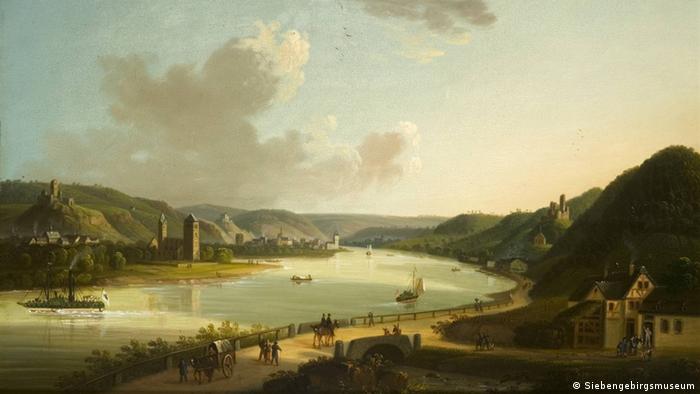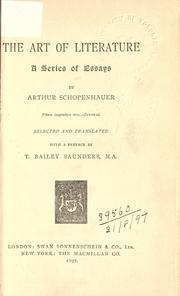林文月教授八十回顧展- 開幕時間:2013年9月3日(週二)上午10:30
- 展覽時間:2013年9月3日至9月27日 特藏組開放時間
- 展覽地點:國立臺灣大學圖書館五樓特藏資料展覽區
- 主辦單位:國立臺灣大學圖書館、國立臺灣大學中國文學系
- 指導教授:國立臺灣大學中國文學系‧臺灣文學研究所 兼任教授 柯慶明
- 聯絡方式:TEL:02-33662342 /E-mail:tulcg@ntu.edu.tw
![林文月教授八十回顧展]()
林文月教授籍貫臺灣彰化,1933年生於上海。就讀臺灣大學中國文學系、研究所,以優異成績畢業後,留校任教,歷任講師、副教授、教授,於1993年夏退休,獲臺大中文系榮譽教授銜。其重要學術著作有:《山水與古典》、《中古文學論叢》等,甚受歡迎。
林教授1969年獲國科會補助,前往日本京都大學人文科學研究所研修中日比較文學,以餘暇撰寫《京都一年》散文集,奠定她作為當代散文名家 的地位。其散文集《遙遠》獲第五屆中興文藝獎散文項獎、《午後書房》獲第九屆時報文學獎散文推薦獎、《交談》獲第十四屆國家文藝獎散文類獎、《飲膳札記》 獲第三屆臺北文學獎。
林教授因研究白居易對平安朝文學影響,在撰寫〈源氏物語桐壺與長恨歌〉論文時,開始了《源氏物語》的翻譯,並因此獲第十九屆國家文藝獎翻譯 成就獎。其後陸續翻譯日本古典文學名著,尚包括《枕草子》、《和泉式部日記》、《伊勢物語》等。亦因林教授在翻譯日本古典文學作品之諸多成就,日本東亞同 文書院特頒贈紀念賞。2012年以多種貢獻獲頒行政院文化獎。
欣逢林教授八十壽慶,臺大中文系為其舉辦國際學術研討會,圖書館亦同時舉辦「林文月教授八十回顧展」,展出其手稿資料、畫作及藏書,並播放「午後書房」紀錄片,意義非凡,歡迎各界前來參觀。
展覽內容分為:(一)展出緣起
(二)活水源頭
(三)師弟情緣
(四)生平簡介
(五)中古:中、日(學術論著)
(六)始於京都(散文創作之一)
(七)擬古 • 飲膳(散文創作之二)
(八)讀人 • 寫書(散文創作之三)
(九)兩大物語
(十)譯解女性
(十一)書信、評述
Seeking Tranquillity,Kyoto, Japan 京都一年(八年)再怎麼說 京都一年或京都八年 都是別人的故事
我當然也有些自己的故事
譬如說 90年代初與吳國精先生到京都一遊(三天兩夜)
對於吳先生而言 是"文化衝擊"
所以他十來年之後 還會帶留學美國康乃爾大學的女兒去重遊
我在他們廣州中山市的工廠之高幹宿舍中 讀到
京都八年
要了解這千年古都 也需要數代的傳承
林文月先生的《京都一年》似乎可以增訂 譬如說 加
平岡武夫教授的《白居易》林文月教授的平岡武夫教授的《白居易》(據(第五屆日本漢學國際學術研討會專題演講)主持人鄭清茂教授說法)
《京都一年》臺北:純文學1971/1984五刷
《京都一年》目錄
自序
奈良正倉院參觀記1
京都的茶會記13
歲末京都歌舞伎關賞記25
訪貴離宮及修學院離宮33
京都的庭園49
空海 東寺 市集61
櫻花時節觀都舞73
神戶東方學會雜記87
鑑真與唐招提寺99
祇園祭115
京都的古書鋪129
吃在京都139
我所認識的三位京都女性157
京都湯屋趣談175
《京都一年》以後
****
《我譯 沈草子》(1988
) 《作品》pp.69-81介紹她到英國一個月 在倫敦十天 在大英博物館的圖書館? 和書店訪書
她那年代已說英國旅館貴 部分原因是她住在羅素廣場 方便訪書....
作者:林文月
社別:九歌 1993
本 書收作者《交談》以來大部分作品。分二卷:上卷收散文創作二十篇;下篇收日本現代短篇小說譯作,及其相關之隨筆七篇,又收其鉛筆肖像二幅。無論散文、隨筆 或翻譯,林文月都以認真的態度寫作,情思細膩深刻,於看似淡淡筆觸間,往往寓含詩趣哲理。她認為寫作、生活,乃至人類的歷史,都是作品的一部分。
本 書收作者《交談》以來大部分作品。分二卷:上卷收散文創作二十篇;下篇收日本現代短篇小說譯作,及其相關之隨筆七篇,又收其鉛筆肖像二幅。無論散文、隨筆 或翻譯,林文月都以認真的態度寫作,情思細膩深刻,於看似淡淡筆觸間,往往寓含詩趣哲理。她認為寫作、生活,乃至人類的歷史,都是作品的一部分。
维基百科,自由的百科全书
林文月(1933年9月5日-),女,生於
上海,
台灣彰化縣人,學者與作家。為
連雅堂之外孫女、
連震東的外甥女,
連戰之表姊妹。
林文月小時住上海
租界,接受
日本教育,回到台灣後才開始接受
中文教育,
台灣大學中文系
學士、
碩士,
1958年就讀碩士班期間,開始在台大任教,
1969年時赴日本
京都大學人文科學
研究所就讀,
1993年從台大退休後,移居
美國。
林文月
日文程度很好,曾對日本
古典文學作品進行翻譯,如《
源氏物語》、《
和泉式部日記》、《
枕草子》。
林文月散文亦佳,其作品過去常被
國立編譯館選入國、高中生中文課本當作教材,作品『翡冷翠在下雨』收錄在
三民版高中國文課本第四冊。
散文
《京都一年》純文學 1971年;三民書局2007年(修訂二版)
《讀中文系的人》洪範書店 1978年
《遙遠》洪範書店 1981年
《午後書房》洪範書店 1986年
《交談》九歌 1988年
《作品》九歌 1993年
《擬古》洪範書店 1993年
《飲酒及與飲酒相關的記憶》洪範書店 1996年
《飲膳札記》洪範書店 1999年
《林文月精選輯》九歌 2002年
《回首》洪範書店 2004年
《人物速寫》聯合文學 2004年
《寫我的書》聯合文學 2006年
《蒙娜麗莎微笑的嘴角》
有鹿文化 2009年
《千載難逢竟逢》(源氏物語千年紀念) 洪範書店 2009年
翻譯
《破天而降的文明人》九歌 1984年
《枕草子》中外文學1989年;洪範書店2000年
《
和泉式部日記》純文學 1993年;三民書局1997年
《源氏物語1~4》洪範書店2000年
《十三夜:(木通)口一葉小說選》洪範書店2004年
論著
《南朝宮體詩研究》台大文學院 1965年
《唐代文化對日本平安文壇的影響》台大文學院 1972年
《山水與古典》純文學 1976年;三民書局1997年《連雅堂傳》雨墨文化 1994年 根據其中二篇
《青山青史(連雅堂傳)》中國出版社 1980年
《謝靈運》國家出版社 1982年
《澄輝集一古典詩詞初探》洪範書店1983年
《中古文學論叢》大安 1989年
《中國古典文學研究叢刊》巨流 1993年
兒童文學(改寫)
《聖女貞德:愛國少女》東方 1989年
《茶花女》東方 1990年
《南丁格爾:白衣天使》東方 1992年
《小婦人》東方 1993年
《居禮夫人:科學之母》東方 1993年
《基度山恩仇記》東方 1994年
演講影音
《最初的讀者》DVD 國立臺灣大學出版中心 2006年
編著
《臺靜農先生紀念文集》洪範書店 1991年
[
編輯] 歷年大事
[
編輯] 受教育時期(1933年-1959年)
1933年 出生於上海市日本租界。啟蒙教育為日本語文。
1946年春 舉家自上海返回臺灣,自小學六年級開始學習中國語文。同年秋,考取北二女,三年後直升高中部。
1952年 考取臺灣大學中文系,及師範學院藝術系,選讀前者。
1957年 與
郭豫倫先生結婚。次年中文研究所畢業,留母校任教。
[
編輯] 臺大任教時期(1959年-1993年)
1960年 至1966年間,編譯《聖女貞德》、《居禮夫人》、《南丁格爾》、《茶花女》、《小婦人》、《基督山恩仇記》(東方出版社)。
1966年 出版《謝靈運及其詩》(學術論著)。
1967年 出版《澄輝集》(學術論著)。
1969年 獲國科會資助赴日,任京都大學人文科學研究所「研修員」一年。
1970年 出版《京都一年》(遊記)。
1972年 出席京都國際筆會,提出日文論文<桐壺と長恨歌>。次年自譯為中文,並附<源氏物語:桐壺>譯文,發表於《中外文學》,始啟《源氏物語》譯文連載之緣,五年半而譯竟。
1977年 出版《山水與古典》(學術論著)。出版《謝靈運》(傳記文學),及《青山青史-連雅堂傳》(傳記文學)。
1978年 出版《讀中文系的人》(散文、論著)。《源氏物語》(日本古典文學譯註)五冊本初版。
1981年 初版《遙遠》(散文集)
1982年 《源氏物語》修訂版上、下二大冊本出版。《遙遠》獲得第五屆中興文藝獎散文項獎章。
1984年 出版《破天而降的文明人》(薩摩亞酋長演講稿集翻譯)。
1986年 出版《午後書房》(散文集),獲得第九屆時報文學獎散文推薦獎。
1987年 獲為香港翻譯學會榮譽會員。
1988年 出版《交談》(散文集),獲得第十四屆(1989)國家文藝獎散文類獎。
1989年 為美國西雅圖華盛頓大學客座教授。出版《枕草子》(日本古典文學譯註)。
1989年 出版《中古文學論叢》(學術論著)。
1991年 編印《臺靜農先生紀念論文集》。
[
編輯] 退休時期(1993年-)
1993年 自臺大退休。為美國加州史丹福大學客座教授。出版《作品》(散文集)、《擬古》(散文集)、《和泉式部日記》(日本古典文學譯註)、《風之花》(散文選集,在大陸出版)。 獲聘為臺灣大學中文系榮譽教授。
1994年 《源氏物語》獲得第十九屆國家文藝獎翻譯成就獎。應邀於香港中文大學新亞書院演講
1995年 為美國加州大學柏克萊分校客座教授。獲日本東亞同文書院紀念賞。
1997年 出版《
伊勢物語》(日本古典文學譯註)、《夏天的會話》(散文選集,在大陸出版)。
1998年 始為日本《アジアエコ-》定期撰寫日文隨筆。
1999年 為捷克查理斯大學客座教授。出版《飲膳札記》。
2000年 出版《DEV?T ZASTAVEN?》(捷克文,譯六朝詩選講義)。《飲膳札記》獲第三屆臺北文學獎。十一月將手中現存之著作手稿、著作自藏本及畫作等資料捐贈臺大圖書館永久典藏。
2001年 臺大圖書館於四月十二日起至六月三十日舉辦『林文月教授手稿資料展─臺大近代名家手稿系列展之二』與座談會、專題演講等系列活動。臺大頒贈感謝狀。
2007年 與
余光中先生、
呂紹嘉先生、
蔡振水先生、
朱國瑞先生、
陳恆昭先生、
蔡明介先生、
施崇棠先生、
李家同先生一共九位,共同獲選為國立台灣大學傑出校友。
****
林文月《青山青史-連雅堂傳》,臺北:雨墨文化出版,1994。
這本書從70年代純文學出版社的林文月《山水與古典》中的兩篇
到專冊出版 這已經是第3家出版商重新出版的新著
書名取自連雅堂"青山青史各千年"手
另外有他傳:
曾迺碩《連橫傳》,南投:臺灣省文獻委員會,1997
昨 天林公夫婦的”望年會”中,還有幾件事可以一記。一是林公的夫人善於(蘇州和台北) 購屋投資,那種到拙政園附近,看風水佳,又有自用地預售屋廣告即刻下車訂屋的勁,是很令人配服的。林公點了一道芋泥,啟明即可背出林文月的《飲膳札記》中 說它宜用豬油,上菜之後還評甜度不夠( 還好 ,不過近年糖價大漲,連台糖公司都受到政府的年前緩漲的政策壓力。)
我跟趙民德先生說,胡適的家鄉人在各種紀念會都極捧場,想起胡適帶梁實秋上家鄉館子時的大吼:「績溪老倌,多加油!」。趙先生說他們參加過中國的徽州旅行團,五天四夜,每人才五百多人民幣 (唯一缺點是旅館品質差)。
---
![]()
飲膳札記
作者:
林文月出版社:
洪範出版日期:1999年04月01日
《飲膳札記》,則是一本用食譜所串連起來的生活回憶。
從 25歲當新嫁娘開始,不識柴米油鹽的林文月,便在每日與鍋碗瓢盆相對的日子中,向家人朋友學習烹飪的技巧,也在每回的宴客過程中,漸漸體 會出烹調的樂趣。在準備宴客佳餚的同時,作者隨手以卡片記錄了菜色內容、與宴對象、和每個人的飲食偏好;這些記錄隨著年紀逐漸累積,不但成為她下回準備宴 客菜時的參考,每次翻閱的過程,也勾起了一個個過往的美好回憶。
藉由19種佳餚的製作過程,作者憶起了當年與朋 友親師的交往。從醃煮紅 燒蹄參的香氣中,聞到朋友們隨年齡漸長只能淺嚐的無奈;從蒸煮蘿蔔糕 的氤氳熱氣中,看見少年時的自己、和母親家人過節時的歡喜期待。不論是作工繁複的潮洲魚翅、香酥鴨,清爽簡單的炒米粉、清炒蝦仁,抑或標準家鄉風味的台灣 肉粽、烤烏魚子,在品味作者筆下的菜香之餘,更能品味到一段段人與人之間難得的濃厚情誼。
行文一向雲淡風清的林文月,用淡淡的文字,書寫了溢滿菜飯香的濃濃回憶;用細細的回味,平衡了所有過往的菜香味和人情況味。
目錄
楔子
潮州魚翅 清炒蝦仁 紅燒蹄參 佛跳牆 芋泥 口蘑湯 水晶滷蛋 香酥鴨 椒鹽裡脊
台灣肉粽 烤烏魚子 扣三絲 蔥烤鯽魚 炒米粉 蘿蔔糕 鑲冬菇 糟炒雞絲
荷葉粉蒸雞 五柳魚 跋言
附錄:生活其實可以如此美好
序
本書為作者藉膳飲記憶,委婉追懷平生親友知己之行止,以十九種嘉肴食譜編織一幅溫馨感人的回憶錄,雖謂知味大廚操典雅之筆觸寫了俎上灶前的割烹經驗,實乃情思悠遠之碩學在全面回味昔時體會到的師恩、友誼、和親情,所加諸於今日的無窮感念。
****
三月曝書作者:
林文月ISBN: 9787208082854
出版社: 上海人民出版社
装帧: 平装
出版年: 2009年
■林文月
三月曝書,曝出淡淡的書香,曝出往日的心事,也曝出了綿綿的回憶。
書,不言語嗎?書,正以各種各樣的語言與我們交談著。
台北的冬季,陰雨連綿時居多。
今日難得忽然放晴,太陽熙暖而無風。我看到院中的一方,春草細柔,另一方,紅磚乾淨,紅綠對比相映,心境不覺地也明朗起來,遂興曝書的念頭。
東漢崔實《四民月令》云:“七月七日,曝經書及衣裳,不蠹。”
其實,現在的讀書人已經用不著曝書了,原因有二:其一是出版業的興隆,許多古書已改為精裝印刷本,而現代的紙張與裝訂都十分牢靠耐潮,不必曝書也不致生霉蠹壞;其二是都市的生活空間愈來愈小,讀書人偶爾到陽光下去曬一下自己已屬不易,更遑論曝書!
可是,我仍然挂慮右側書櫥最高處的一批線裝書。三月份的台北十分潮濕,那些古舊的線裝書重重堆疊,有些又外加函套,難免會固執地藏匿著濕氣吧?所以,習慣上每年總要曬一次書。
說做就做吧,否則台北的三月,誰預料得準明天是晴是雨?
我開始借那一隻取書用的高腳木凳,上陟下降,分成好幾回,才把放在平時伸手不及處的一堆線裝書搬下來。
坦 白說,我平時很少取閱這些線裝書。因為同樣的書,在我書房較低而便於隨手取放處,差不多都有了現代式的鉛印平裝本或精裝本,有的還不止一種版本。我保留它 們,是因其紀念的性質或賞愛的性質遠超過實用性,所以在有限的書房空間內,只得將其“束之高閣”,置於“邊陲地帶”。
我不是藏書家,我的線裝書不多,也沒有甚麼名貴的版本。不過,耐心地將成疊的及包裹在書篋內的書一本本攤開來,竟也覆滿了半個紅磚地的院子。
平日生活忙碌,瑣務纏身,難得有這樣好的興致逐冊摩挲,何況熙日在背;我索性就蹲下來,和書一起曬曬太陽吧。
冊 數最多的一套線裝書是《東周列國志》,計有二十四冊。這一套也是我的線裝書中最老的一套,是乾隆年間的版本,紙張已呈淺褐色,訂書的絲線也多斷絕,致有一 冊殘缺失頁,另一冊的封面也不知去向,卻難得全套書都沒有受到蠹魚之害。我略略翻覽,覺有書香撲鼻。那書香來自兩百多年前的清朝,遂不免有歷史的聯想。倣 宋的字體緊密排列,樸拙可愛。至於首冊中的幾張插畫,更透露著俚俗的趣味。嚴格說來,這些人物圖像線條鬆散乏力,恐怕連“匠氣”都談不上,但每個人物依其 個性、背景,倒也看得出煞費苦心用意。比如褒姒與西施畫得都不美,但衣飾繁富,頗見其襯托美人之旨。董狐執筆,范蠡泛舟,荊軻手握匕首諸圖,也都能表現他 們的故事。
《古文辭類纂》共十六冊,僅次於《東周志》,是我所有線裝書中,面貌最完整的一 套。這是民國初年在上海 石印 的。雖然紙張難免也有一些斑駁的褐黃痕漬,但整齊的歐體,字與字間的密度也較松,看來甚是宜人;尤其可貴的是眉批也都排印整齊。這是集合眾先賢智慧的《百 大家批評新體註釋》版,書面有鈕君宜署書。
我從前遇著研究版本學的人,見他們翻書,每每不太注意書的內容而偏于字體、版面、序跋等等年代印處之考查,覺得不可思議。沒想到今日曝書,在書房之外翻弄這些舊籍,竟也有類似的好奇。大概線裝書的迷人處即在此,總是令人分心。
其 實,這些線裝書大部分是一九一二年的上海石印本,其中尤以掃葉山房發行者居多:《詩經集傳》、《郭注爾雅》、《孫子十家注》、《亭林詩文集》、《煙霞萬古 樓詩集》、《仲瞿詩錄》及《壯悔堂文集》均屬此。印行的時間,則自一九一三年到一九二六年不等。我是如何得到這些線裝書的呢?
是母親十餘年前送給我的。
我猜測:母親這些線裝書,又大部分獲自外祖父連雅堂先生。至於外祖父于何時購得這些書,如何贈與母親,這些沒有追問的事情,遂令後悔永遠留為後悔……
外 祖父選購這些書的時間有兩個可能:一是他老人家著史立言完成後,晚年移居上海,住在家父的“公園坊”八號時期;一是一九二七年,他在台北的大稻埕區開設“ 雅堂書局”時期,當時日人佔領台灣,推行日文教育,但外祖父的書店卻專售中文書籍,以示反抗。所採購的書籍即以上海的掃葉山房、廣益書店、商務印書館等為 主要對象。
我猜測,還是以後一種可能性為大。因為,在這一堆線裝書當中,《亭林詩文集》竟 有兩套。極有可能于“雅 堂書局 ”結束營業後,外祖父選攜其中若干書籍赴上海;而他在上海去世時,母親繼承了他老人家的一些遺物,這些線裝書是其中的一種。當時舅父連震東先生因住在西 安,路遙不便於攜帶書籍,所以僅保留一些字畫等墨寶。
有一套也是掃葉山房石印的《莊子》四 冊,雜陳眾書間,貌不驚 人,卻 為我所最珍愛。因為這套書裏面有外祖父的硃筆圈點閱讀的痕跡,又有一些眉批,可以令人想見他當日的感慨與心得。例如在外篇《胠篋》文:“聖人不死大盜不 止,雖重聖人而治天下,則是重利盜跖也。”有眉批:“憤言,痛言,至精之言。”“彼竊鉤者誅,竊國者為諸侯。諸侯之門,而仁義存焉,則是非竊仁義聖知邪云 云。”不僅每字旁邊都有朱圈,上又有眉批:“一部二十四史皆作如是觀。”外祖父身為史家,於此當有深刻感慨無疑。至如《在宥》上的眉批:“在宥即自由,意 相近。在宥者,天然也;自由者,人為也。人為之患,障以法律;天然之極,放于德性。不治而有治矣。”可以看出他于著述《台灣通史》之餘又兼治文字聲韻之 學。《雅言》一書,分析台灣語言與古音古義的關係,可為證明。
外祖父去世時,我年僅四歲, 懵懵無知。雖然也曾寫過 一本他 的傳記,資料卻絕大部分來自後日的閱讀,對於外祖父的記憶幾乎沒有。這四冊線絕、紙張泛黃的老書,一度曾在他的掌中翻展摩挲過,當時圈點眉批之際的心境仿 佛可以想見:則書籍在握,已不僅止于版本年代之好奇與關心,而依稀有血肉親情的溫暖感受了。
這 些線裝書之中,只有 一本是 我自己在大約十年前于東京舊書店購得的《三謝詩》。雖然是影印本,但係印自宋代善本,而且有藍底散碎金箔的封面,又有藏青布制的書篋包裏,所以也是我自己 十分喜歡的。我曾經請臺先生題字,那函套上有毛筆字跡:“景宋本三謝詩文月女弟藏乙卯冬初靜農題”。
曝書的末端是兩種日本的線裝書:一是三冊一套的《富岳百景》,另外一本是日本的《變態刑罰史》。都是多年前靜農師所贈送。我曾經聽說過靜農師初來臺時,常喜歡逛舊書店或地攤,買一些便宜的好書。這兩種書都是日本大正年間出版,也都有半世紀以上的時間了。
久蹲著翻弄書籍,忽然起身,竟覺有輕微的目眩頭暈,但片刻而愈。
我看到眼前院中是紅磚、綠車與微黃的書皮覆地,三色相間,甚可欣賞。而台北居大不易,雖非大庭廣宅,能擁有屬於自己的一方庭院,已足堪安慰,又有線裝書若干,未必善本名版,能這般偶爾玩賞,更是何等幸運。
舉首,正見白雲悠悠,三月的陽光熙和溫暖。今日無風,正宜曝書。
******
作者简介 · · · · · ·
作者作品:
·
《三月曝书》![]()
序一 “台湾学人散文丛书”总序/周志文 序二 林文月散文的特点与文学史意义/何寄澎
记忆中的一爿书店 三月曝书
午后书房 阳光下读诗 一本书 往事 迷园 从温州街到温州街 在台大的日子
读中文系的人 我的三种文笔 消失在长廊尽处——追忆朱立民先生
怕羞的学者——Janles Robert Hightower印象记 J A H 一位医生的死
父亲 白发与脐带 窗外 翡冷翠在下雨 意奥边界一瞥 步过天城隧道
白夜——阿拉斯加印象 遥远 苍蝇与我 脸(外一章) 佛跳墙 炒米粉
烤乌鱼子 芋泥 秋阳似酒风已寒 饮酒及与饮酒相关的记忆
后记 散文的经营/林文月
【聯合報╱錢婉約(北京語言大學人文學院中文系系主任)】
2012.11.17 04:37 am
握有「三種文筆」的林文月,以自己在教書、著述、翻譯、創作等方面所做出的碩大成績,造就了一道美麗風景,這風景的名稱,叫作「美麗林文月」……
【壹】
![]()
《飲膳札記》、《京都一年》、《源氏物語》、《枕草子》、《伊勢物語》書影。
(圖/洪範、三民提供)
世間的風景有多樣,壯闊的,纖穠的;雄渾的,清麗的;典雅的,時尚的……每一道風景,緣自它生長的土壤,每一道風景,各具獨特的美感。
在中國現當代學術文化史上,林文月真可算是一道獨特亮麗的風景。日前,她現身北京大學,為北大學子作公開講座,聽眾達四百人之多;又在北大與六朝文學、中日比較文學、當代散文等相關領域的學者,進行了為期一天的閉門工作會(Workshop),本人有幸參與其會。
年 屆八秩的她,在中國六朝文學研究、日本古典文學漢譯和散文創作三個方面,都作出了驕人的業績,令人矚目。一般說來,平常人,學者也好,譯家也好,文人也 好,一輩子能夠得到她上述三者當中的一份成績,也應該是很好、很圓滿了。偏偏她能夠三者兼顧,更還出了本《飲膳札記》──女教授的十九道私房佳肴,弄得不 知學術為何物的飲食男女、普通讀者,也通過她的廚房料理,得知了她的美麗人生和過人才華。不僅僅如此,林文月還更得上天眷顧,天生生得「美目盼兮,巧笑倩 兮」,富有民國才女之風韻,而高鼻闊嘴間又透出西洋的大器……一時間,美麗林文月在秋意正濃的京城,颳起了一陣不大不小的文學旋風。
【貳】
![]()
林文月。
(圖/本報資料照片)
林 文月出生於上世紀30年代上海日租界,從小上的是日本人小學,接受了十多年母語式的日本語教育。日本戰敗,她回到祖籍台灣,才知道自己是「中國人」。之 後,林文月一路在台灣學習成長,讀的是台大中文系,畢業後一路做到母校中文系教授,可以說是將自己真正的母語,修成了正果。日語的先天優越,中文系的後天 學養,是她正式展開日本古典文學翻譯的雄厚資本。這兩者缺失一項,或許都要減分不少。目下出版的外國文學翻譯作品,更多出自外語出生的譯者之手。這讓我們 常常懷念過去年代富有國學素養、漢文功底深厚的周作人、錢稻孫、豐子愷等人的翻譯。從這一點上看,林文月的中文系身分,使她具備了可以上承這些前輩大家的 資質,無論在翻譯上,還是創作上。
《京都一年》是林文月散文創作的不俗起步。1969年,她在京都大學人文科學研 究所訪問進修,專業研修之外,她遍訪京都古剎名寺、書店、料理店,體悟千年 古都的文化遺存、風俗人情。陸續寫成京都遊記,一篇篇寄回台灣發表。在那個中日之間尚沒有很多往來交通,更遑論開放旅遊的時代,這本隨後結集出版的《京都 一年》,是林文月留日一年,不亞於專業(正業)研究成果的重要副業收穫。
在我看來,當時要在京都成就這份副業,是 有點「功夫在詩外」的意味的。除了日語嫻熟外,至少還需要另兩個要素──經濟上和心情上兩方面的餘裕。不妨拿兩個 例子來說明。一是,在結束京都進修前,林文月父母歐遊返台路過日本,在京都一流的「東華菜館」,特設中華料理宴席,款待京大人文研照顧女兒的日本人指導教 師等人,那些並不能讓宴請主人滿意的異邦中國菜,卻令日本教授吃得「津津有味,讚不絕口」。一席五萬日元,這種沒有後顧之憂的經濟實力,恐怕是入鄉問俗、 入鄉隨俗的基本保證吧,也是《京都一年》中逛書肆、品茶會、觀歌舞伎、享受京料理的前提。這是經濟方面的餘裕。另一個例子,在她歷年散文中多次提到自己的 一位京都好友「秋道太太」「A女士」──一個有文藝追求的日本料理店老闆娘,一個能夠把自己絕密隱私告知作者,並在此後三十多年一直與作者維繫著友情、分 享著人生歡愁的京都女人,她的故事,在林文月筆下,如剝筍般層層展開,虛實相間,鋪陳有致,有驚異,有理解,這是對異國的采風,更是對生命情愛的追尋。如 果沒有精神上走近日本,走近日本人內心的明敏,又如何寫得出這樣體貼入裡的散文?這是心情上的餘裕。
這麼想來,是否可以說,作為學者而能夠研究與創作兼營兼善,是要有一顆敏感靈動的心和優雅餘裕的心境,無論在何時何地,本土抑或異邦。
【參】
1972 年,林文月赴日參加學術研討會,宣讀〈桐壺與長恨歌〉的中日比較文學論文,之後,論文在台灣大學《中外文學》上刊發,同時附錄了《源氏物語》第一 回〈桐壺〉的漢文翻譯。以此為契機,林文月用了五、六年時間,翻譯出百萬言的《源氏物語》全本,從1973年至1978年在《中外文學》上連載完畢。這是 中文世界《源氏物語》譯本的首次完整問世。
在此之前,豐子愷於1965年末完成了《源氏物語》的全部翻譯,卻因遭遇文革爆發,出版計畫蹉跎十多年,直到1980年,豐譯《源氏物語》上冊前二十回才得以問世,中冊和下冊於1982、1983年陸續出齊。
可以說,林文月庶幾是在中文世界漢譯《源氏物語》第一人的心情和責任感之下,完成並出版了這部巨著的。
繼 此之後,她又陸續完成了《枕草子》、《和泉式部日記》、《伊勢物語》等日本古典文學的漢譯工作。這四部著作構成了日本平安時代文學的巔峰陣容,也是林文 月以一己之力,對中文世界做出的巨大貢獻。其中,《枕草子》有周作人譯本,《伊勢物語》有豐子愷譯本,這兩個譯本在大陸的命運,也都是早譯而晚出。周作 人、豐子愷是上個世紀初的留日學生,是林文月的大前輩。林文月譯本在中文世界能夠「後起而領先」,不能不令人尋味這過去的百年中,大陸與台灣文化環境、學 術力量的此消彼長,交替演進。
人們多津津樂道《源氏物語》豐譯和林譯的風格特色,也喜歡比較評說《枕草子》周譯和 林譯的優劣高下。這確實是饒有趣味的話題,可以藉以增進讀者閱讀鑑賞的 能力和品味。但我不想對此細說詳辨。要之,周作人、豐子愷、林文月等人先天的性別不同,所處時代不同,加之學術環境、人生境遇、語言稟賦等外在因素的差 異,使他們呈現了各具風格特色的譯作,令漢譯日本文學名著的園地晨鐘暮鼓、陰陽濃淡交錯有致,正如京劇舞台上之有梅、尚、程、荀,柔美、典雅、深沉、委 婉、剛健,異彩紛呈,有福的正是我們讀者和觀眾了。
更令我駐足留意的,是譯者林文月面對千年前作者和作品的心境和態 度。學者的謹嚴和練達,文人的敏感和細膩,透過譯文,躍然呈現出來,令人讚嘆。細品《源氏 物語》修訂本序言,你會感到,對於這麼一部裹挾著許多謎題、幾乎是凌空出世的日本古典文學長篇;對於這麼一部花費了自己五、六年心血,首譯問世的鴻篇巨 制,譯者在交代敘述時,不緊不慢,把《源氏物語》的世界性位置,作者的姓名身世及創作過程,物語、和歌的文學史闡釋及與中國類似文體的比較,以及平安時代 的貴族生活圖景等等,一一娓娓道來;又推進及於原書主題的探究,現代日本語譯本,乃至於西文譯本之比較,一項項曲盡其詳。而所有這些,都是用了平易簡約的 文字來寫出。沒有旁徵博引,不作高深玄奧,由博返約、通達洗練,呈現出「博文約禮」的美德和厚積薄發的功力。
博與 約之外,還有理與情。林文月說:「近來我則又逐漸了悟,即使寫學術論文,仍然不能完全抹煞情感;至於冷靜與同情之間的斂放不逾矩,又委實是此類文章的 高層次標的了……冷筆與熱筆的運用自如,也應當是寫作論文的更合情合理的正途吧。」(〈我的三種文筆〉)在遵守學者的冷靜客觀和理性謹嚴的同時,也要不失 研究者自己的情感立場,這一點,林文月的主張或許不能被時下的青年學人所全部認同和體悟,而正是在這點上,我也是深表贊同的。且看她給《枕草子》作者清少 納言寫的一封信:「你的心情,我想是可以體會的……你可以把我當作一個知音,因為我曾經仔仔細細讀你所寫的每一個字,並且能夠體會那些文字,以及文字以外 的一些事情。」(〈你的心情〉)她就是以這樣一種獨特的方式,發表一個譯者對於所譯作品、作者的理解、評論,甚至交談,道出譯者對於文學、生命、情愛這些 永恆主題的體認和主張。正如她在另一處所說:「隨著翻譯工作的進展,我越來越覺得自己參入了紫式部的世界。有時夜深人靜,獨對孤燈,彷彿紫式部來相伴,雖 千年相隔,文章神交,我並不寂寞。」(〈我的三種文筆〉)文學的魅力直抵人心,無論古今,無論中外。林文月首先感悟到了,又用她的譯筆,為我們侈譯傳達出 這個融匯古今、打通中外的通明世界。這時,她是多麼充滿了感情,充滿了自信!
紫式部、清少納言得遇林文月,何其有幸!
握有「三種文筆」的林文月,以自己在教書、著述、翻譯、創作等方面所做出的碩大成績,造就了一道美麗風景,這風景的名稱,叫作「美麗林文月」。
全文網址:
對岸觀點/美麗林文月 | 聯副‧創作 | 閱讀藝文 | 聯合新聞網http://udn.com/NEWS/READING/X5/7504304.shtml#ixzz2CSfxKQH1Power By udn.com
【聯合報╱錢婉約(北京語言大學人文學院中文系系主任)】
2012.11.17 04:37 am
握有「三種文筆」的林文月,以自己在教書、著述、翻譯、創作等方面所做出的碩大成績,造就了一道美麗風景,這風景的名稱,叫作「美麗林文月」……
【壹】
![]()
《飲膳札記》、《京都一年》、《源氏物語》、《枕草子》、《伊勢物語》書影。
(圖/洪範、三民提供)
世間的風景有多樣,壯闊的,纖穠的;雄渾的,清麗的;典雅的,時尚的……每一道風景,緣自它生長的土壤,每一道風景,各具獨特的美感。
在中國現當代學術文化史上,林文月真可算是一道獨特亮麗的風景。日前,她現身北京大學,為北大學子作公開講座,聽眾達四百人之多;又在北大與六朝文學、中日比較文學、當代散文等相關領域的學者,進行了為期一天的閉門工作會(Workshop),本人有幸參與其會。
年 屆八秩的她,在中國六朝文學研究、日本古典文學漢譯和散文創作三個方面,都作出了驕人的業績,令人矚目。一般說來,平常人,學者也好,譯家也好,文人也 好,一輩子能夠得到她上述三者當中的一份成績,也應該是很好、很圓滿了。偏偏她能夠三者兼顧,更還出了本《飲膳札記》──女教授的十九道私房佳肴,弄得不 知學術為何物的飲食男女、普通讀者,也通過她的廚房料理,得知了她的美麗人生和過人才華。不僅僅如此,林文月還更得上天眷顧,天生生得「美目盼兮,巧笑倩 兮」,富有民國才女之風韻,而高鼻闊嘴間又透出西洋的大器……一時間,美麗林文月在秋意正濃的京城,颳起了一陣不大不小的文學旋風。
【貳】
林文月。
(圖/本報資料照片)
林 文月出生於上世紀30年代上海日租界,從小上的是日本人小學,接受了十多年母語式的日本語教育。日本戰敗,她回到祖籍台灣,才知道自己是「中國人」。之 後,林文月一路在台灣學習成長,讀的是台大中文系,畢業後一路做到母校中文系教授,可以說是將自己真正的母語,修成了正果。日語的先天優越,中文系的後天 學養,是她正式展開日本古典文學翻譯的雄厚資本。這兩者缺失一項,或許都要減分不少。目下出版的外國文學翻譯作品,更多出自外語出生的譯者之手。這讓我們 常常懷念過去年代富有國學素養、漢文功底深厚的周作人、錢稻孫、豐子愷等人的翻譯。從這一點上看,林文月的中文系身分,使她具備了可以上承這些前輩大家的 資質,無論在翻譯上,還是創作上。
《京都一年》是林文月散文創作的不俗起步。1969年,她在京都大學人文科學研 究所訪問進修,專業研修之外,她遍訪京都古剎名寺、書店、料理店,體悟千年 古都的文化遺存、風俗人情。陸續寫成京都遊記,一篇篇寄回台灣發表。在那個中日之間尚沒有很多往來交通,更遑論開放旅遊的時代,這本隨後結集出版的《京都 一年》,是林文月留日一年,不亞於專業(正業)研究成果的重要副業收穫。
在我看來,當時要在京都成就這份副業,是 有點「功夫在詩外」的意味的。除了日語嫻熟外,至少還需要另兩個要素──經濟上和心情上兩方面的餘裕。不妨拿兩個 例子來說明。一是,在結束京都進修前,林文月父母歐遊返台路過日本,在京都一流的「東華菜館」,特設中華料理宴席,款待京大人文研照顧女兒的日本人指導教 師等人,那些並不能讓宴請主人滿意的異邦中國菜,卻令日本教授吃得「津津有味,讚不絕口」。一席五萬日元,這種沒有後顧之憂的經濟實力,恐怕是入鄉問俗、 入鄉隨俗的基本保證吧,也是《京都一年》中逛書肆、品茶會、觀歌舞伎、享受京料理的前提。這是經濟方面的餘裕。另一個例子,在她歷年散文中多次提到自己的 一位京都好友「秋道太太」「A女士」──一個有文藝追求的日本料理店老闆娘,一個能夠把自己絕密隱私告知作者,並在此後三十多年一直與作者維繫著友情、分 享著人生歡愁的京都女人,她的故事,在林文月筆下,如剝筍般層層展開,虛實相間,鋪陳有致,有驚異,有理解,這是對異國的采風,更是對生命情愛的追尋。如 果沒有精神上走近日本,走近日本人內心的明敏,又如何寫得出這樣體貼入裡的散文?這是心情上的餘裕。
這麼想來,是否可以說,作為學者而能夠研究與創作兼營兼善,是要有一顆敏感靈動的心和優雅餘裕的心境,無論在何時何地,本土抑或異邦。
【參】
1972 年,林文月赴日參加學術研討會,宣讀〈桐壺與長恨歌〉的中日比較文學論文,之後,論文在台灣大學《中外文學》上刊發,同時附錄了《源氏物語》第一 回〈桐壺〉的漢文翻譯。以此為契機,林文月用了五、六年時間,翻譯出百萬言的《源氏物語》全本,從1973年至1978年在《中外文學》上連載完畢。這是 中文世界《源氏物語》譯本的首次完整問世。
在此之前,豐子愷於1965年末完成了《源氏物語》的全部翻譯,卻因遭遇文革爆發,出版計畫蹉跎十多年,直到1980年,豐譯《源氏物語》上冊前二十回才得以問世,中冊和下冊於1982、1983年陸續出齊。
可以說,林文月庶幾是在中文世界漢譯《源氏物語》第一人的心情和責任感之下,完成並出版了這部巨著的。
繼 此之後,她又陸續完成了《枕草子》、《和泉式部日記》、《伊勢物語》等日本古典文學的漢譯工作。這四部著作構成了日本平安時代文學的巔峰陣容,也是林文 月以一己之力,對中文世界做出的巨大貢獻。其中,《枕草子》有周作人譯本,《伊勢物語》有豐子愷譯本,這兩個譯本在大陸的命運,也都是早譯而晚出。周作 人、豐子愷是上個世紀初的留日學生,是林文月的大前輩。林文月譯本在中文世界能夠「後起而領先」,不能不令人尋味這過去的百年中,大陸與台灣文化環境、學 術力量的此消彼長,交替演進。
人們多津津樂道《源氏物語》豐譯和林譯的風格特色,也喜歡比較評說《枕草子》周譯和 林譯的優劣高下。這確實是饒有趣味的話題,可以藉以增進讀者閱讀鑑賞的 能力和品味。但我不想對此細說詳辨。要之,周作人、豐子愷、林文月等人先天的性別不同,所處時代不同,加之學術環境、人生境遇、語言稟賦等外在因素的差 異,使他們呈現了各具風格特色的譯作,令漢譯日本文學名著的園地晨鐘暮鼓、陰陽濃淡交錯有致,正如京劇舞台上之有梅、尚、程、荀,柔美、典雅、深沉、委 婉、剛健,異彩紛呈,有福的正是我們讀者和觀眾了。
更令我駐足留意的,是譯者林文月面對千年前作者和作品的心境和態 度。學者的謹嚴和練達,文人的敏感和細膩,透過譯文,躍然呈現出來,令人讚嘆。細品《源氏 物語》修訂本序言,你會感到,對於這麼一部裹挾著許多謎題、幾乎是凌空出世的日本古典文學長篇;對於這麼一部花費了自己五、六年心血,首譯問世的鴻篇巨 制,譯者在交代敘述時,不緊不慢,把《源氏物語》的世界性位置,作者的姓名身世及創作過程,物語、和歌的文學史闡釋及與中國類似文體的比較,以及平安時代 的貴族生活圖景等等,一一娓娓道來;又推進及於原書主題的探究,現代日本語譯本,乃至於西文譯本之比較,一項項曲盡其詳。而所有這些,都是用了平易簡約的 文字來寫出。沒有旁徵博引,不作高深玄奧,由博返約、通達洗練,呈現出「博文約禮」的美德和厚積薄發的功力。
博與 約之外,還有理與情。林文月說:「近來我則又逐漸了悟,即使寫學術論文,仍然不能完全抹煞情感;至於冷靜與同情之間的斂放不逾矩,又委實是此類文章的 高層次標的了……冷筆與熱筆的運用自如,也應當是寫作論文的更合情合理的正途吧。」(〈我的三種文筆〉)在遵守學者的冷靜客觀和理性謹嚴的同時,也要不失 研究者自己的情感立場,這一點,林文月的主張或許不能被時下的青年學人所全部認同和體悟,而正是在這點上,我也是深表贊同的。且看她給《枕草子》作者清少 納言寫的一封信:「你的心情,我想是可以體會的……你可以把我當作一個知音,因為我曾經仔仔細細讀你所寫的每一個字,並且能夠體會那些文字,以及文字以外 的一些事情。」(〈你的心情〉)她就是以這樣一種獨特的方式,發表一個譯者對於所譯作品、作者的理解、評論,甚至交談,道出譯者對於文學、生命、情愛這些 永恆主題的體認和主張。正如她在另一處所說:「隨著翻譯工作的進展,我越來越覺得自己參入了紫式部的世界。有時夜深人靜,獨對孤燈,彷彿紫式部來相伴,雖 千年相隔,文章神交,我並不寂寞。」(〈我的三種文筆〉)文學的魅力直抵人心,無論古今,無論中外。林文月首先感悟到了,又用她的譯筆,為我們侈譯傳達出 這個融匯古今、打通中外的通明世界。這時,她是多麼充滿了感情,充滿了自信!
紫式部、清少納言得遇林文月,何其有幸!
握有「三種文筆」的林文月,以自己在教書、著述、翻譯、創作等方面所做出的碩大成績,造就了一道美麗風景,這風景的名稱,叫作「美麗林文月」。















 華盛頓郵報公司已同意將包括《華盛頓郵報》
華盛頓郵報公司已同意將包括《華盛頓郵報》
















 CNET あとで読む
CNET あとで読む






